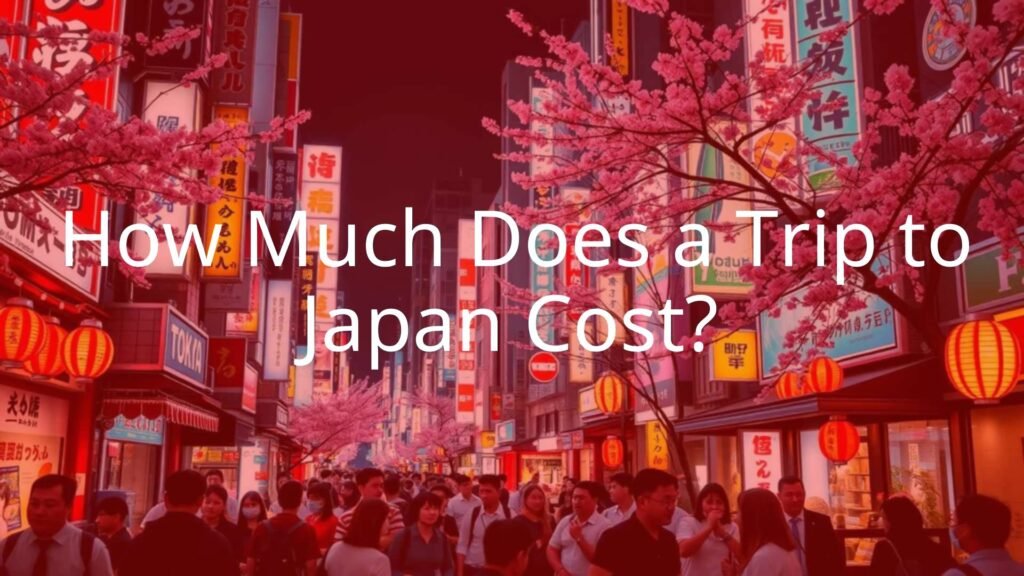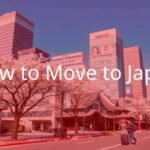Japan is a country where traditions meet high-tech cities, with peaceful temples sitting alongside the lively streets of Tokyo and Osaka. Many people feel inspired to visit, but often wonder, “Isn’t Japan really expensive?” While Japan is not the cheapest place to go, smart planning makes visiting possible for many budgets. Costs depend on how you like to travel, how long you stay, and where you go. Whether you prefer world-class restaurants or simple street food, five-star hotels or unique capsule pods, Japan has options for every type of traveler.

Is Japan Pricey for Tourists?
Japan has long been seen as an expensive place to visit. While staying in fancy hotels and riding the bullet train (Shinkansen) without a rail pass can get costly, Japan can also be affordable. Many visitors find prices similar to, or sometimes cheaper than, Western Europe or North America. Knowing what things cost and making thoughtful decisions will help you get the most out of your trip.
The idea that Japan is very expensive mainly comes from big cities like Tokyo or certain attractions that seem pricey at first. However, things like efficient public transit, budget-friendly meals, and free or low-cost sights even out your spending. In short, your choices shape how much you spend, rather than Japan always being expensive.
Average Daily Costs by Type of Traveler
To give you a better idea, here’s what a typical day in Japan might cost for different travel styles:
- Budget Traveler: Around $50 to $100 a day. This includes staying in hostels or cheap hotels, using public transport, eating at convenience stores or local small restaurants, and mostly visiting free sights.
- Mid-Range Traveler: Around $150 to $250 a day. This covers mid-range hotels, dining at popular restaurants, and paying for admission to top sights and museums. This is a common choice for couples or families wanting comfort at a reasonable price.
- Luxury Traveler: $380 a day and up. If you want fancy hotels, gourmet dining, private drivers, and exclusive activities, be ready to spend at this level.

These daily amounts help estimate the total trip cost. A solo traveler might spend around $1,050 (¥151,816) for a week, or about $2,099 (¥303,632) for two weeks. For a couple, it’s about $2,099 for one week or $4,198 for two weeks.
What Affects Your Trip Cost?
Your total cost depends on several main areas:
- Travel style: Are you sticking to a tight budget or splurging for comfort?
- Length of stay: Longer trips often spread out big costs (like flights) but rack up more on daily expenses.
- Where you go: Big cities usually cost more than rural areas, especially for hotels and restaurants.
- When you visit: Peak times like cherry blossom season (late March to early April) and autumn leaves (October to November) raise prices for flights and hotels. Visiting in off-peak or less busy seasons saves money.
Other details matter too: Do you prefer theme parks or free shrines? Street food or high-end dining? Will you use travel passes or buy individual tickets? Even small things-like choosing a bottled coffee from a convenience store instead of a café-can add up.
Japan Trip Cost Overview
Here’s a breakdown of the main expenses for most travelers:
Accommodation Costs
Places to stay make up a big part of your budget. Prices vary by city, time of year, and type. In Tokyo, a mid-range hotel is $90-$230 per night, and a luxury hotel can easily go over $500. In smaller towns, mid-range places start at $55 per night. Dorm beds in hostels cost $23-$45, while capsule hotels range from $18-$36 per night.
Ryokans (traditional inns) are a special option, from $45 to $270+ per night, with many including meals and cultural touches.

Prices shoot up during busy seasons, so booking early and checking different websites is a good way to save.
Flight and Travel Costs
Flights are usually the largest single cost. A round-trip economy ticket from North America is $600-$1,500, from the UK is $1,100-$1,700, and from Australia $800-$1,400.
Inside Japan, local transport is efficient. Metro rides cost $1.50-$2.80 each. The Shinkansen (bullet train) is fast but expensive-Tokyo to Kyoto is about $120 one way. Rail passes like the Japan Rail Pass or Tokyo Subway Ticket can save money if you use them a lot.
Food and Eating Out
Japan’s food ranges from cheap to very expensive. Street and fast food costs $3-$8 per meal. Regular restaurants are about $8-$20, while fancy dinners in high-end places easily top $100. Tipping isn’t standard in Japan, so the price you see is what you pay.
To save, eat at convenience stores like 7-Eleven, FamilyMart, or Lawson, which sell lots of tasty and cheap options. Lunch deals at popular restaurants give you a great meal for less. Even on a tight budget, you won’t miss out on flavor in Japan.
Attraction and Activity Fees
Many top sights are free, including temples like Senso-ji in Tokyo and Fushimi Inari in Kyoto. Paid sights, like certain museums or castles, cost $2-$20. Theme parks such as Tokyo Disneyland or Universal Studios are about $70-$74 a day. Traditional experiences, like a tea ceremony, are usually around $18-$36. Lots of cities also have free or low-cost walking tours, public parks, and gardens.
Passport, Visa, and Insurance
You’ll need a valid passport; fees vary by country (for example, US: $145, UK: £75.50, Australia: AUD $298). For short visits, many tourists do not need a visa, but check the rules for your country. Travel insurance is strongly recommended-healthcare can get very expensive. Policies for two weeks usually cost $50-$200, depending on your age and the coverage. Many credit cards or websites include insurance, so check before you buy.
Flight and Internal Travel Costs
Understanding what flights and transportation in Japan cost helps you manage your budget.
Flight Prices to Japan
Flight prices to Japan often vary widely depending on your starting city, when you travel, the airline, and when you book. Generally, expect a round-trip economy ticket from North America to Tokyo to be around $600-$1,500. From the UK, it’s $1,100-$1,700, and from Australia $800-$1,400.
Peak seasons like cherry blossoms and autumn colors push prices up, while off-peak travel (for example, winter excluding New Year’s) usually brings cheaper tickets. Being flexible and booking early are the best ways to get a deal.
Getting Around: Trains, Buses, and Subway
Japan’s public transport is clean and on time. In the cities, single subway rides are about $2-$4. Day passes cost $7.30 and are sometimes a better choice if you take the train multiple times a day.
For traveling between cities, Shinkansen trains are fastest but cost around $120-$130 for a one-way trip from Tokyo to Kyoto or Osaka. Local buses are $2-$5 per ride and are a nice way to see the scenery. Taxis start around $6-$7 and climb quickly, so it’s better to use them for short trips.
Is the Japan Rail Pass Worth It?
The Japan Rail Pass lets you ride most JR trains, including many Shinkansen, for a set time (7, 14, or 21 days). After a big price jump in October 2023, the 7-day pass costs about $270. To see if it saves you money, add up the cost of single tickets for all your planned train rides and compare. On many itineraries, buying single tickets (especially through regional rail sites) is now cheaper for most tourists unless you plan lots of long train rides in a short time.
However, some travelers still like the convenience and freedom of the pass, especially if you want to make day trips without worrying about buying multiple tickets. Do the math before you buy.
Places to Stay and How Much They Cost
Your choice of accommodation will have a big effect on your Japan trip budget. Here are some options with typical prices.
Hotel Types: Cheap, Average, and High-End
Japan has hotels at all price levels. Budget “business hotels” offer compact, clean rooms and often cost $45-$90 per night. Well-known examples in Tokyo include the Tokyo Dome Hotel (from $80) or Shinagawa Prince Hotel (from $89).
Mid-range hotels in major cities charge about $90-$230 nightly (for example, Hotel New Otani Tokyo Garden Tower from $191, Mitsui Garden Hotel Ueno from $114). In smaller cities, these are sometimes even cheaper, at $55-$140 per night. Luxury hotels are usually $270 and way up; top picks like The Peninsula Tokyo or Mandarin Oriental start around $735-$761 a night.
Unique Places: Ryokans, Capsules, and Hostels
For something different, try a ryokan-traditional Japanese inns with tatami mats, futons, communal baths, and meals. Prices go from $45 for simple ones to $270 or more for luxury stays with meals and private baths. Ryokans are a popular way to experience Japanese traditions.
Capsule hotels are a fun, affordable choice, giving you a small personal pod for $18-$36 per night. Hostels start at $23 for a dorm bed, with many offering private rooms from $50-$90. These are great for meeting people and saving money.
When Hotel Prices Rise or Drop
Hotel prices shoot up during cherry blossom season and when autumn leaves are at their peak. Other busy times are Golden Week (early May) and New Year’s. During these periods, book early because places fill up fast. If you can visit in less busy months (May after Golden Week, September, or winter excluding New Year), you’ll find lower prices and more choices. For example, a hotel room might be $190 during high season but drop to $102 in the low season.
Food Costs and What to Eat
Japan’s food scene is famous, but eating out doesn’t have to cost a fortune. There are plenty of options for different budgets.
What Meals Cost
Street food or fast food is about $3-$8. A simple meal at a local spot often runs $8-$20. Mid-range restaurants are $20-$50 per meal. Top-end places, including ones with Michelin stars, easily charge $100-$200 or more. Tipping is unusual, so prices are straightforward.
Affordable Food Choices
Convenience stores (konbini), like 7-Eleven, FamilyMart, and Lawson, sell fresh and filling meals (onigiri, bento, sandwiches) for $3.60-$5.40. These are good for breakfast, lunch, or late-night snacks.
Local favorites like ramen and udon shops, donburi places, or izakaya bars often serve dishes for $6.30-$13.50. Even simpler spots can hide some of Japan’s best flavors, so don’t overlook small, local places. Visiting public markets offers fresh, affordable meals and a taste of everyday Japan.
Example Daily Food Budget
- Breakfast: Onigiri or café breakfast: $5-$10
- Lunch: Ramen, udon, or bento: $8-$15
- Dinner: Casual restaurant or izakaya: $20-$40
- Snacks/Drinks: Drinks, sweets: $5-$10
Total Daily: $38-$75
With careful choices, you can eat well for under $40 a day, or even less if you stick to cheaper options.
Sightseeing and Attraction Fees
Japan has a wide range of things to see and do, with activities for every budget.
Famous Sights and What They Cost
Some of the most popular sights-like Shibuya Crossing, the Imperial Palace Gardens, and many temples and shrines-are free. Top museums charge $2.70-$13.50; for example, Tokyo National Museum is about $9. Osaka Castle is $5.40. Some paid public viewpoints (like Tokyo Skytree) can be $28.
Theme Parks
For fun at places like Tokyo Disneyland or Universal Studios Japan, expect to pay $70-$74 for a one-day ticket. Buying tickets online before you go is smart, especially in busy seasons.
Cultural Experiences and Tours
Special cultural activities such as a tea ceremony cost $18-$36. Renting a kimono for photos is $27-$90. Cooking classes are $75-$140. Guided tours, like photo walks or trips to Mt. Fuji, run from $35 to over $200. Many parks, gardens, and self-guided tours are free or low-cost if you prefer cheap or flexible options.

Trip Cost by Duration
Costs rise with trip length, so here’s what to expect:
- 3-Day Trip: $200-$400 for a budget trip, not including flights. Covers accommodation, daily expenses, and some attraction fees.
- 1-Week Trip: $1,200-$3,000 covers flights, hotels, local travel, food, and several sights. Budget travelers can aim from $1,200-$2,000.
- 2-Week Trip: $3,000-$6,000 for a fuller trip that includes a range of cities, meals, and activities. Solo travelers might spend $2,500-$3,000. A couple, around $4,198.
Costs for Different Group Sizes
- Solo Traveler: Will pay for a full room unless staying in hostels. Daily mid-range budget is about $150.
- Couples: Share hotel rooms and some expenses, so it’s cheaper per person. One week costs about $2,099, two weeks about $4,198 for both.
- Families: Hotels can get pricey, especially if you need bigger rooms. Kids’ tickets are sometimes cheaper for attractions, and apartments with kitchens can help save money on food.
Sample Budget Plans
Example 1: 7-Day Tokyo & Kyoto (Mid-Range for Two)
- Flights: $1,200 (two people)
- Accommodation: 6 nights x $150 = $900
- Transportation:
- Tokyo Metro Pass: $22
- Shinkansen: $240
- Kyoto local travel: $40
- Food: 7 x $100 = $700
- Activities:
- Tokyo Skytree: $56
- Osaka Castle: $11
- Tea Ceremony: $50
- Free spots: $0
- Shopping: $200
- Total: About $3,379 (or about $1,690 per person)
Example 2: 14-Day Japan Highlights (Budget for One)
- Flights: $1,000
- Accommodation: 13 x $30 = $390
- Local travel: $100
- Train tickets: $350
- Food: 14 x $30 = $420
- Activities:
- Universal Studios: $70
- Snow Monkey Park: $7
- Garden: $3
- Free places: $0
- Shopping: $100
- Total: About $2,340
The choices you make on hotels, eating out, and activities really shape your budget.
How to Cut Costs in Japan
Japan’s reputation for being expensive doesn’t mean you can’t save. Here are some ways to spend less and still enjoy your trip:
Tips for Budget Travel
- Stay in capsule hotels, hostels, or business hotels.
- If you’re with family or a group, look for apartments with kitchens and cook some meals.
- Couchsurfing offers free stays and a chance to meet locals.
- Use convenience stores for cheap, filling meals. Try street food and noodle shops for local flavors at low prices.
- Use public transport instead of taxis or rental cars. Walk as much as possible to save money and discover hidden spots.
- Check out free parks, temples, and public viewpoints for great experiences with no charge.
Discount Passes and Special Deals
- The Japan Rail Pass is good for lots of long train journeys, but calculate if single tickets will be cheaper for your plans.
- City passes like the Tokyo Metro Pass offer unlimited travel for a few days, perfect if you use the subway a lot.
- Some attractions offer combination tickets for multiple sights or include public transport at a discount.
- Book theme park tickets online for discounts or quicker entry.
- Look for cheap eSIM data (as low as $0.92) and rental car deals (up to 8% off) online.
Travel in Off-Peak Times
Traveling outside the busiest times saves a lot. Avoid late March-April (cherry blossoms) and October-November (autumn leaves). Instead, go during the shoulder months like May (after Golden Week) or September, or visit in winter (December-February, but skip New Year’s). You’ll find better prices and fewer crowds.
Japan Trip Cost FAQ
How Much Should I Budget for Japan?
This depends on your style and length of stay. A comfortable 7-10 day mid-range trip usually costs $2,500-$5,000 per person, flights included. Budget travelers can do a 7-day trip for about $1,200-$2,000. Luxury trips can easily be $7,000 or more for two weeks.
Can I Survive on $100 a Day?
Yes, but you’ll need to stick to hostels or very cheap hotels, eat mainly at convenience stores or small restaurants, use public transport, and focus on free attractions. It’s doable, but doesn’t leave much room for big splurges or long-distance train rides.
Is $5,000 Enough for Two Weeks?
Yes, $5,000 is enough for one person to have a comfortable two-week trip with flights, good hotels, a mix of dining, all transport, and top sights. It can even cover a couple if you share costs and avoid luxury hotels. fancier options will raise your total, though.
Should I Buy Passes and Tickets Early?
Yes, it’s usually smart to buy tickets ahead of time for theme parks and popular tours, especially during busy times. Some also sell out. For a Japan Rail Pass, you usually must buy it before you enter the country. Booking Shinkansen tickets in advance (especially at busy times) means you won’t miss out. Booking guided tours, special dining, or unique cultural experiences ahead of time also ensures you have a spot and can sometimes give you a better price. Even your phone data can be bought before you land.
- What Is a Maiko? - July 13, 2025
- What Does Domo Arigato Mean? - July 12, 2025
- What Does Naruto Mean? - July 12, 2025









